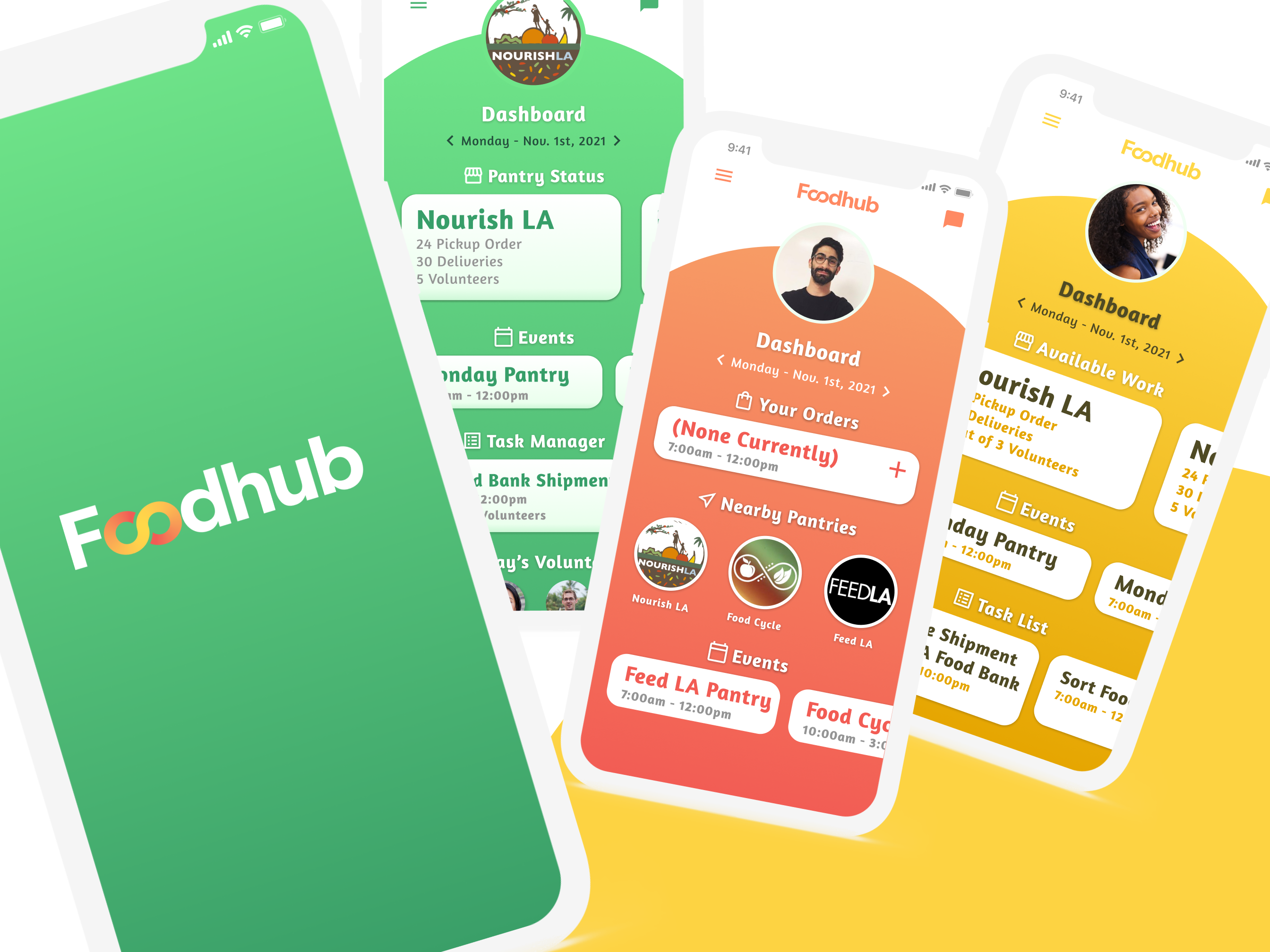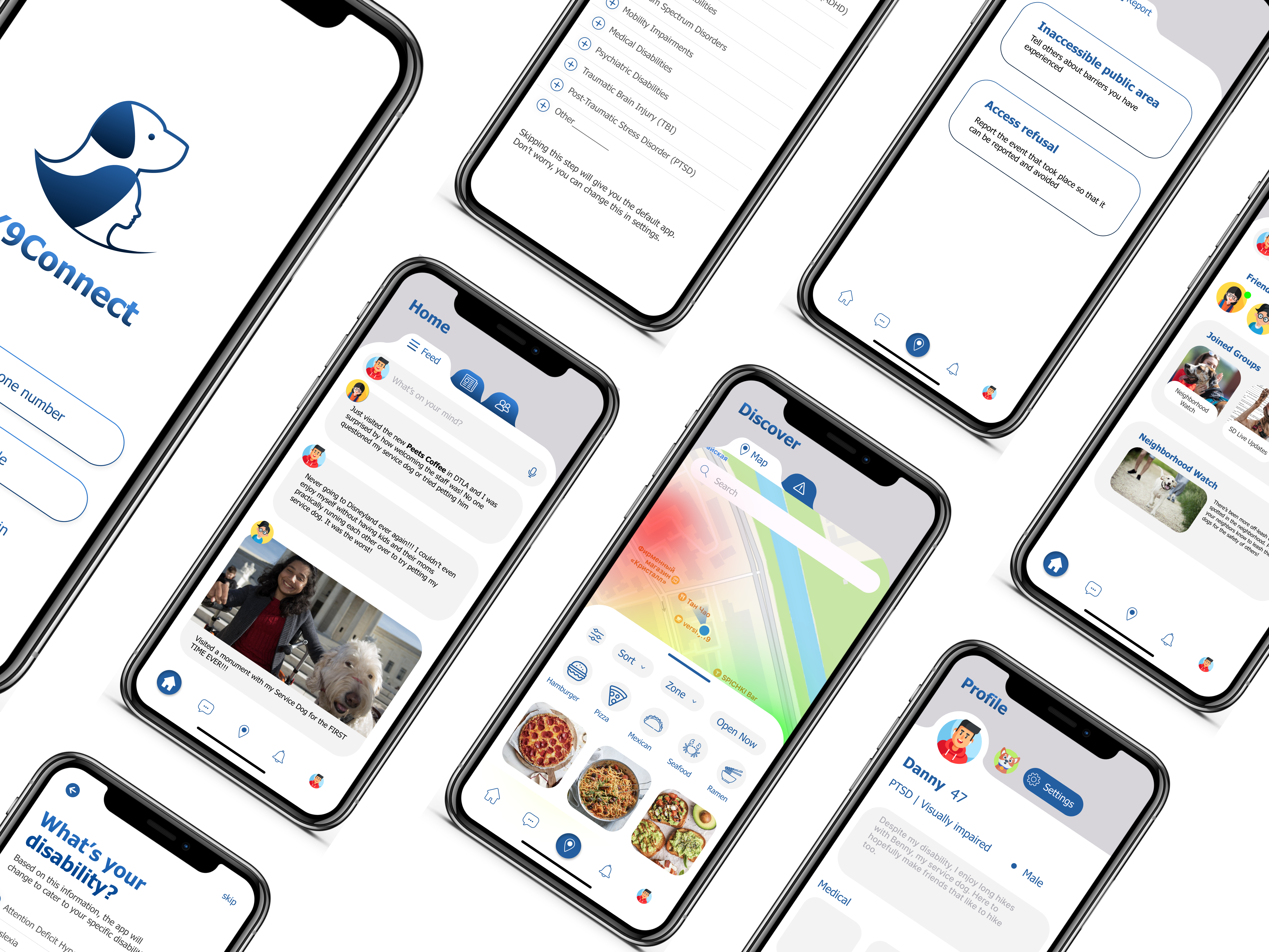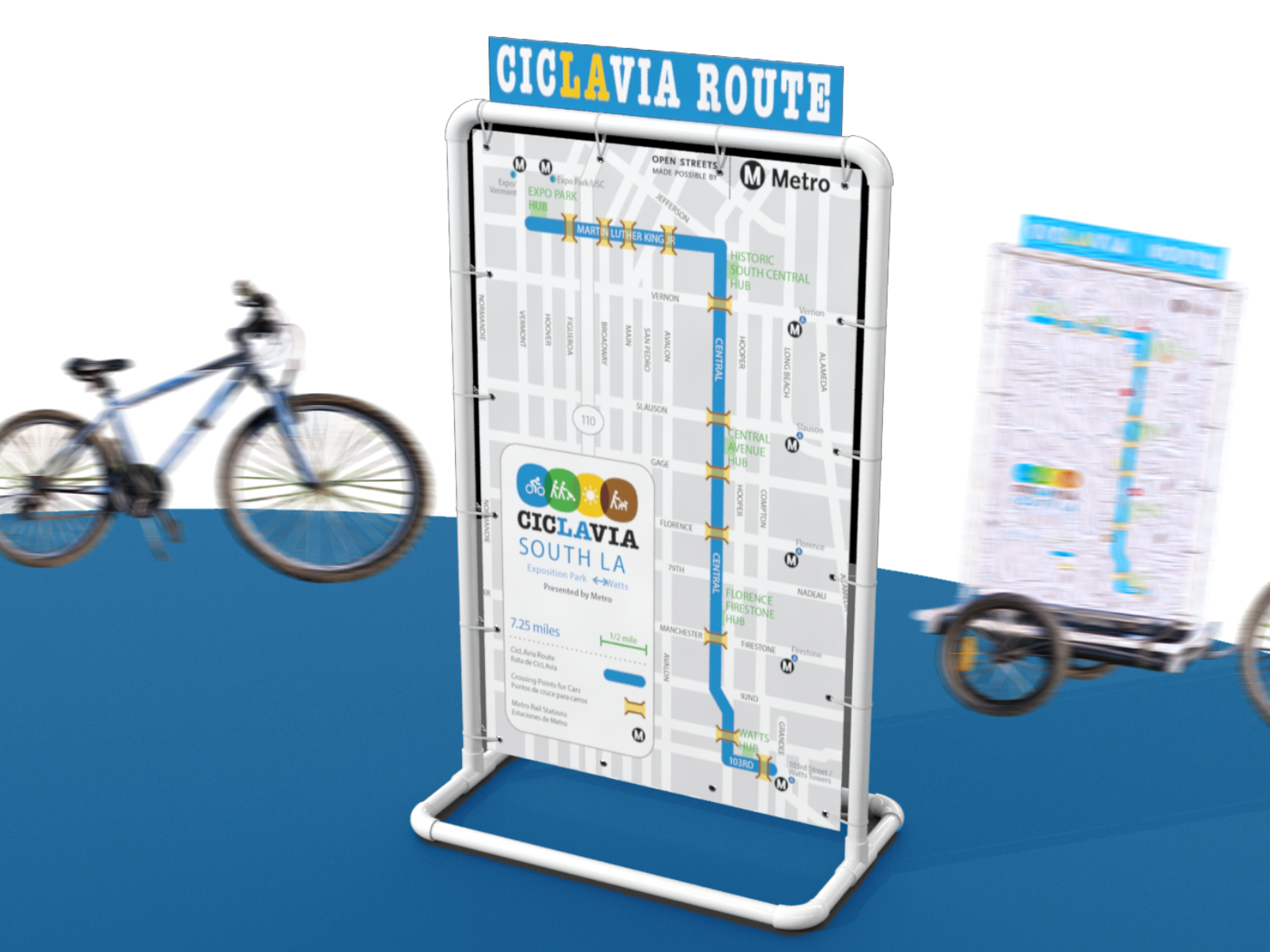Design Brief:
The client, a mother with three kids, is seeking a solution to minimize unwanted children's gifts and reduce overall clutter. The goal is to create a product that enhances the gift-giving experience for both the giver and the receiver.
Role:
Lead UX/UI Designer and Researcher
The Research
Child Gifting App Discovery
Top Insights:
1. Project Goals and Success Metrics:
Goals: Achieve critical mass in users, facilitate positive ratings, and secure $250k in funding for development.
Success Defined By: Active user engagement, positive user feedback, and meeting the fundraising target.
2. Values and Vision for the Product:
Vision: Simplify the gift-giving process for both gifters and recipients.
Values: Simplicity in receiving physical gifts, tracking gifts over time, reducing clutter, fostering a sense of community, and providing a way to see the impact of gifts.
3. Target Audiences:
Primary Audience: Loved ones giving and receiving gifts for children aged 0 to 10 for various occasions.
Future Expansion: Consider replicating the concept for all age groups.
4. Consumer Pain Points and Solutions:
Pain Points: Item recognition, clutter from unwanted gifts, lack of a rolling wishlist, and the need for age-appropriate gift suggestions.
Solutions: Implement AI for item recognition, create a platform for streamlined gifting, reduce clutter, introduce rolling wishlists, and provide age-appropriate gift suggestions.
5. Marketing and Growth Strategies:
Positioning: Emphasize time and cost savings, personal gratification in giving desired gifts, and fostering a sense of community.
Growth Strategies: Expand to support other age groups, explore options for going public or getting acquired, become the go-to app for gifters, and introduce features like thank-you videos and the ability to send physical gifts.
Main Takeaway:
The overarching insight is that success is not just about achieving numerical goals but also about creating a product that aligns with the values and needs of the target audience, solves real-world problems, and has a strategic vision for sustainable growth and expansion.
Competitive Analysis
Insights + Opportunities:
1. Online platforms:
• All companies provide their services through an online platform = users have access + can manage their accounts from anywhere.
• All companies provide their services through an online platform = users have access + can manage their accounts from anywhere.
2. Gift registry management:
• Allows users to create personalized gift wish lists for special occasions.
• Allows users to create personalized gift wish lists for special occasions.
3. Gift giving + receiving:
• Send gifts directly to their intended recipients.
• Buying and selling unique products.
• Great shipping services.
• Send gifts directly to their intended recipients.
• Buying and selling unique products.
• Great shipping services.
4. User-friendly + intuitive interfaces:
• Makes it easier for users to navigate.
• Find what they’re looking for.
• Customize
• Makes it easier for users to navigate.
• Find what they’re looking for.
• Customize
5. Personalization:
• Messages + photos.
• Customizing designs + layouts of registries and stores.
• Messages + photos.
• Customizing designs + layouts of registries and stores.
6. Group gifting:
• Multiple people can contribute to one gift item.
• Multiple people can contribute to one gift item.
7. Wide range of products:
• Almost all platforms have a wide range of products to choose from
not super sustainable though.
• Almost all platforms have a wide range of products to choose from
not super sustainable though.
8. Customer support:
• Email
• Chat
• Phone
• Chat
• Phone
9. Social media marketing:
• Leverage social media platforms to promote products + services.
• Facebook
• Instagram
• Twitter
• Share engaging content
• Gift ideas, tutorials, customer reviews
• Interact with/ their followers
• Leverage social media platforms to promote products + services.
• Share engaging content
• Gift ideas, tutorials, customer reviews
• Interact with/ their followers
10. Influencer marketing:
• Partner with/ influencers, bloggers, and celebrities to promote their products + services.
• Influencers usually have large platforms that help raise brand awareness + drive sales.
• Partner with/ influencers, bloggers, and celebrities to promote their products + services.
• Influencers usually have large platforms that help raise brand awareness + drive sales.
11. Email marketing:
• Promote + stay in touch with/ their customers.
• Newsletters
• Offers
• Reminders of upcoming holidays.
• Promote + stay in touch with/ their customers.
• Newsletters
• Offers
• Reminders of upcoming holidays.
12. SEO:
• Search engine marketing.
• Pay-per-click ads to attract customers who search for gift-related keywords.
• Search engine marketing.
• Pay-per-click ads to attract customers who search for gift-related keywords.
13. Mobile apps:
• Most of these companies offer mobile apps.
• Allows the user to access their accounts + manage gifts on the go.
• Most of these companies offer mobile apps.
• Allows the user to access their accounts + manage gifts on the go.
• Dated UI!
Main Takeaway:
Successful companies in the gift industry need to prioritize a seamless and personalized user experience across various channels. Combining user-friendly online platforms, efficient gift registry management, a wide range of products, and effective marketing strategies—such as social media, influencer marketing, and email campaigns—can collectively contribute to a competitive edge. Additionally, staying responsive to customer needs, incorporating sustainability measures, and continually improving technology interfaces, especially in mobile apps, are crucial components for long-term success in the evolving landscape of gift-giving services.
Consumer Survey









Insights:
Demographics:
Age:
• Younger parents seem to prefer more tech-savvy solutions for gift management.
• Older parents lean towards traditional methods and gifts.
Gender and Marital Status:
• Married couples seek more coordinated gift-giving strategies.
• Gender seems to influence preferences for certain types of gifts or shopping platforms.
Occupation and Annual Household Income:
• Occupation and income levels influence spending habits and preferences for higher-end gifts.
Race or Ethnicity:
• Cultural backgrounds influence the types of gifts preferred or the importance placed on certain values.
Household Size and Location:
• Larger households prefer more practical gifts.
• The location influences preferences for experiences or outdoor gifts based on local opportunities.
Tech:
Mobile Device and Online Shopping Preferences:
• Those using mobile devices seem to appreciate mobile-friendly gift management solutions.
• Preferred online shopping platforms and devices indicate preferred user interfaces.
Social Media Usage:
• Social media preferences influence the effectiveness of social platform marketing for gift recommendations.
Gift Registry and Reviews:
• A positive correlation exists between those who use gift registries and those who heavily rely on reviews.
Children:
Number and Age of Children:
• Parents with multiple children prefer streamlined gift solutions.
• The age of children impacts preferences for toy types and gift themes.
Preferences for Educational or Experiential Gifts:
• A desire for educational gifts correlates with an interest in experiences over material items.
Environmental Consciousness:
• The importance placed on environmentally friendly gifts influences product choices.
Emotional:
Managing Gift Overwhelm:
• Parents feeling overwhelmed appreciate solutions that simplify gift management.
Challenges in Managing Gifts:
• Common challenges include storage issues, leading to a demand for practical, space-saving gifts.
Communication with Gift-Givers:
• Those communicating with gift-givers about reducing gifts appreciate platforms that facilitate such communication.
Appreciation and Giving Back:
• Parents valuing appreciation and giving back prefer gifts that align with these values.
Second-hand and Waste Preferences:
• Those concerned about waste are more open to second-hand or sustainable gift options.
General Trends and Predictions:
Tech Integration:
• A demand for tech solutions to streamline gift management.
• Preferences for mobile-friendly interfaces and online shopping.
Experience over Material Items:
•Growing interest in experiential and educational gifts.
• Desire for gifts that encourage physical activity.
Environmental Considerations:
• Increasing preference for environmentally friendly and sustainable gifts.
Communication and Coordination:
• A need for improved communication between parents and gift-givers.
• Potential for coordinated efforts, such as gift exchanges or guidelines for gift-giving.
Budget Awareness:
• Concerns about household budgets, potentially leading to more thoughtful and practical gift choices.
Main Takeaway:
Successful ventures in the gift industry should prioritize user-centric, tech-integrated solutions that simplify the gift-giving process. Businesses should tailor their strategies to resonate with the values and preferences of their target audience, which includes an emphasis on experiential and environmentally friendly gifts. Additionally, recognizing and addressing common pain points, such as clutter and overwhelming gift situations, can contribute to the success of the platform. Strategic communication between gift-givers and recipients, leveraging technology for efficient gift management, and staying adaptable to evolving consumer preferences emerge as key elements for sustained growth and positive user engagement in the dynamic landscape of gift-related services.
Generational Research
Insights:
Multi-device Accessibility for Gen Alpha Engagement:
It's crucial to extend our platform's accessibility beyond phones to tablets and gaming consoles, considering that Gen Alpha, our target audience (0-12), is growing up in a digital world where technology is integral to both entertainment and education.
A user-friendly and visually appealing design, featuring bold colors, playful graphics, and interactive animations, will be essential to capture their attention. By creating an interactive and engaging platform with customization options and creative tools, we can cater to Gen Alpha's values of individuality and self-expression.
Education and Responsibility through Interactive Experiences:
Leveraging the familiarity of Gen Alpha with interactive digital experiences, our platform should incorporate educational content, especially in STEM areas, aligning with the trend that Gen Alpha is the most educated generation. Moreover, introducing eco-friendly products and elements can help instill a sense of responsibility for the environment and encourage them to be conscientious global citizens. Gamification, virtual reality, and interactive storytelling are effective strategies to make learning both fun and engaging.
Safety, Security, and Trust:
Recognizing parents' concerns about the safety and privacy of their children on digital platforms, it's imperative to prioritize safety and security features. This includes secure payment options, privacy settings, and password protection. Incorporating FDA approvals and adhering to CPSC regulations for toys can enhance parents' confidence in the safety of the products offered. Transparency about safety measures will contribute to building trust and credibility.
Social Commerce and Influencer Marketing:
Gen Alpha's purchasing decisions are highly influenced by social factors. Implementing social commerce features, such as community engagement and interactive reviews in video form, can create a sense of community among children and parents. Additionally, tapping into the trend of kids relying on YouTube and TikTok for toy reviews, we can consider incorporating trusted reviews and recommendations into our platform to enhance credibility and guide purchasing decisions.
Educational Product Categories and Sustainability:
Acknowledging Gen Alpha's interest in educational content, our platform should offer a diverse range of gift categories, including toys, books, electronics, and educational products. By incorporating sustainable and socially responsible products, we not only align with the values of Gen Alpha but also contribute to educating them about the importance of sustainability. This reflects the findings from an IKEA survey where a majority of parents expressed the importance of teaching children about sustainability.
Main Takeaway:
These insights point towards the necessity of creating a versatile, engaging, and safe platform that not only appeals to Gen Alpha's interests and values but also addresses the concerns of parents, fostering a digital space that is both enjoyable and educational.
Exploration
Subsequently, we consolidated our research findings to formulate a comprehensive vision for the app. Commencing with the development of a detailed flowchart, we meticulously outlined the functionality and features of the envisioned "gifting app."
Flowchart:
The outlined flowchart serves as a strategic blueprint for the comprehensive functionality of the gifting app, ensuring a seamless user experience from onboarding to event management.
Onboarding Process (1.0):
• Begins with creating an account and signing in to establish personalized profiles.
• Prioritizes user engagement through a thoughtfully designed onboarding profile.
Account Management (2.0 - 2.2):
• Offers a robust account management system, including settings, security features, and the ability to link partners for joint profiles.
• Incorporates features like coin wallets, subscriptions, and potential affiliate link opportunities for a versatile user experience.
Parent Hub (3.0):
• Centralizes key features for parents, including shipping addresses, notifications, and a limited child hub.
• Foster's personalization through interests and profile data to enhance the overall gifting experience.
Explore and Search Functionality (4.0):
• Facilitates a user-friendly browsing experience with an emphasis on gift discovery.
• Integrates a search feature, allowing users to efficiently find specific items or interests.
Shopping and Wishlist Management (5.0):
• Streamlines the shopping process with features like shops you love, wishlists, and an AI-powered shopping assistant in Phase 2.
• Promotes personalization and engagement through Premium Design Elements, recently viewed items, and upcoming events.
Event Creation and Management (6.0 - 6.1):
• Enables users to create and manage events seamlessly, including RSVP tracking, thank-you cards, and community recaps.
• Provides a comprehensive marketplace for various products and opportunities for subscription-based experiences.
Product Pages and Checkout Experience (7.0):
• Enhances the product discovery process with detailed product pages, ratings, and group gifting options in Phase 2.
• Introduces a sustainable shopping experience, donations/charity options, and a resale market for added diversity.
RSVP Management and Event Interaction (8.0):
• Optimizes the RSVP process with features for sending reminders and tracking gifts.
• Encourages post-event engagement through chats with attendees, thank-you cards, and community recaps.
V1 Wireframing
Main Takeaway:
I synthesized the data gathered from the survey and research to create wireframes that illustrate various user flows derived from the flowchart. Initially, we aimed to cater to the parent/adult demographic by developing straightforward functionality that is intuitive enough for children to use when managing their own personal wishlists. This approach prioritized accessibility and simplicity for both adults and children alike.
In the final version, you'll notice a significant shift from our initial focus on designing for parents/adults to tailoring the interface specifically to cater to children. This transition reflects our commitment to creating an engaging and user-friendly experience tailored to the needs and preferences of our younger audience.




